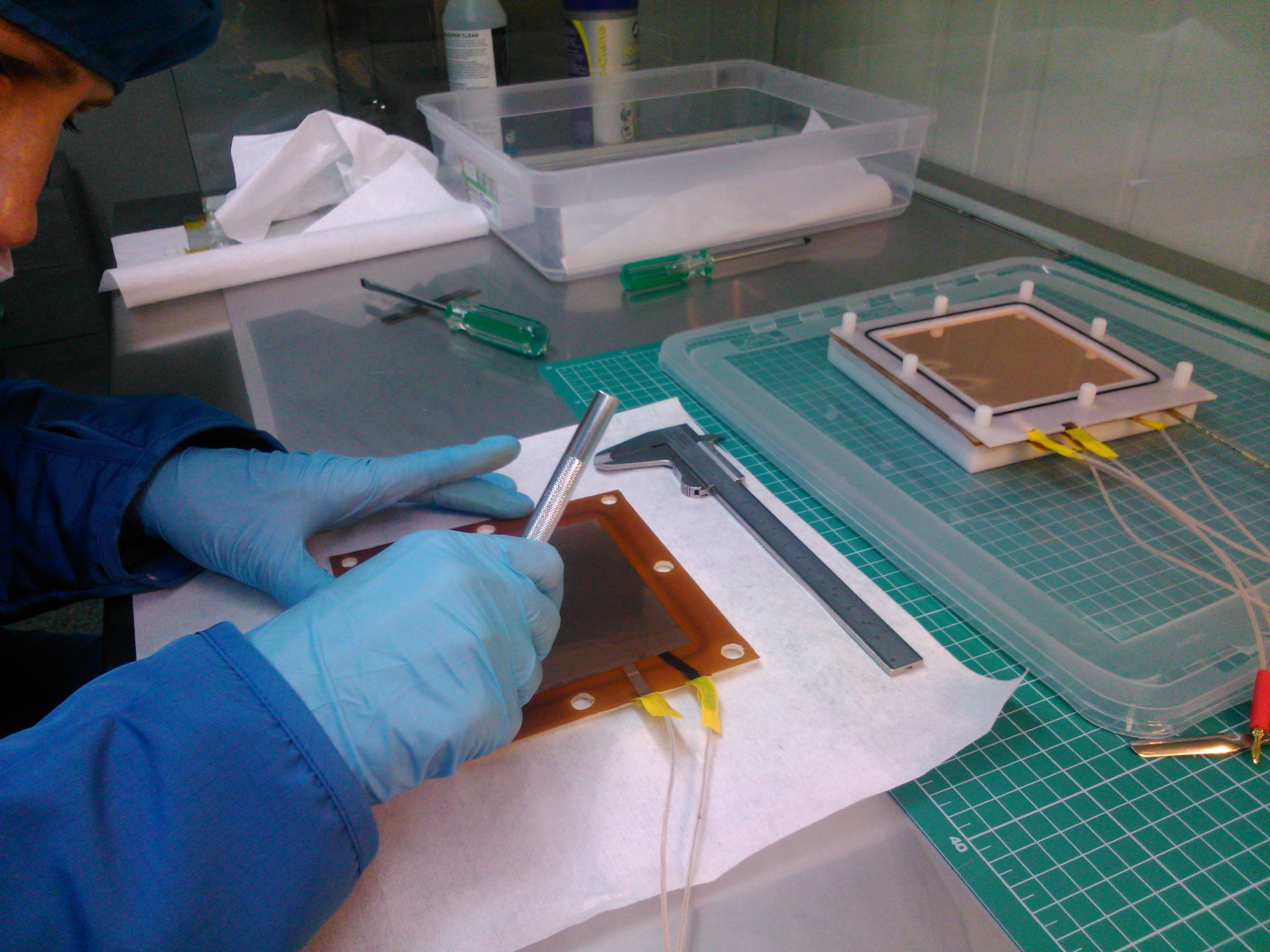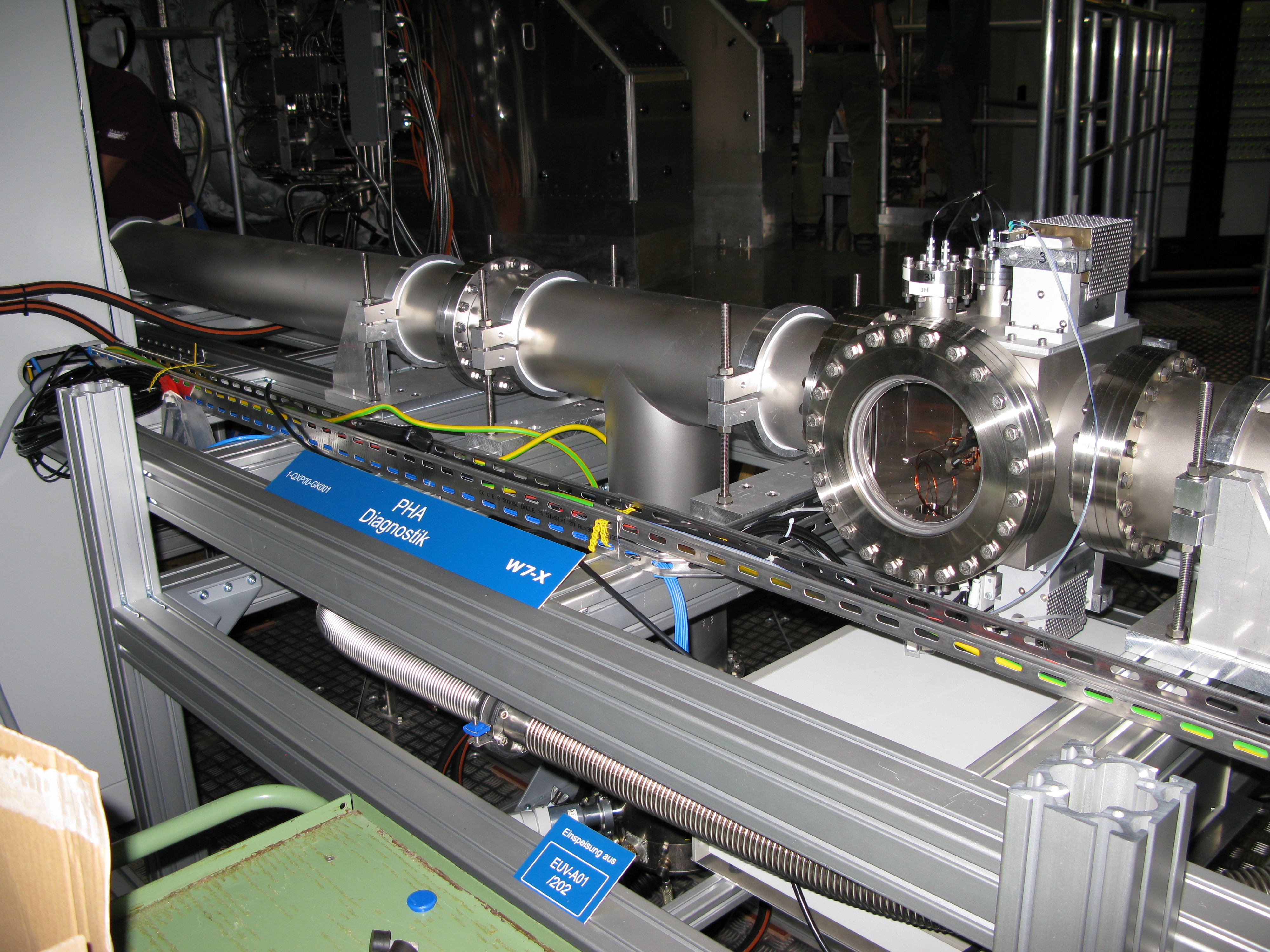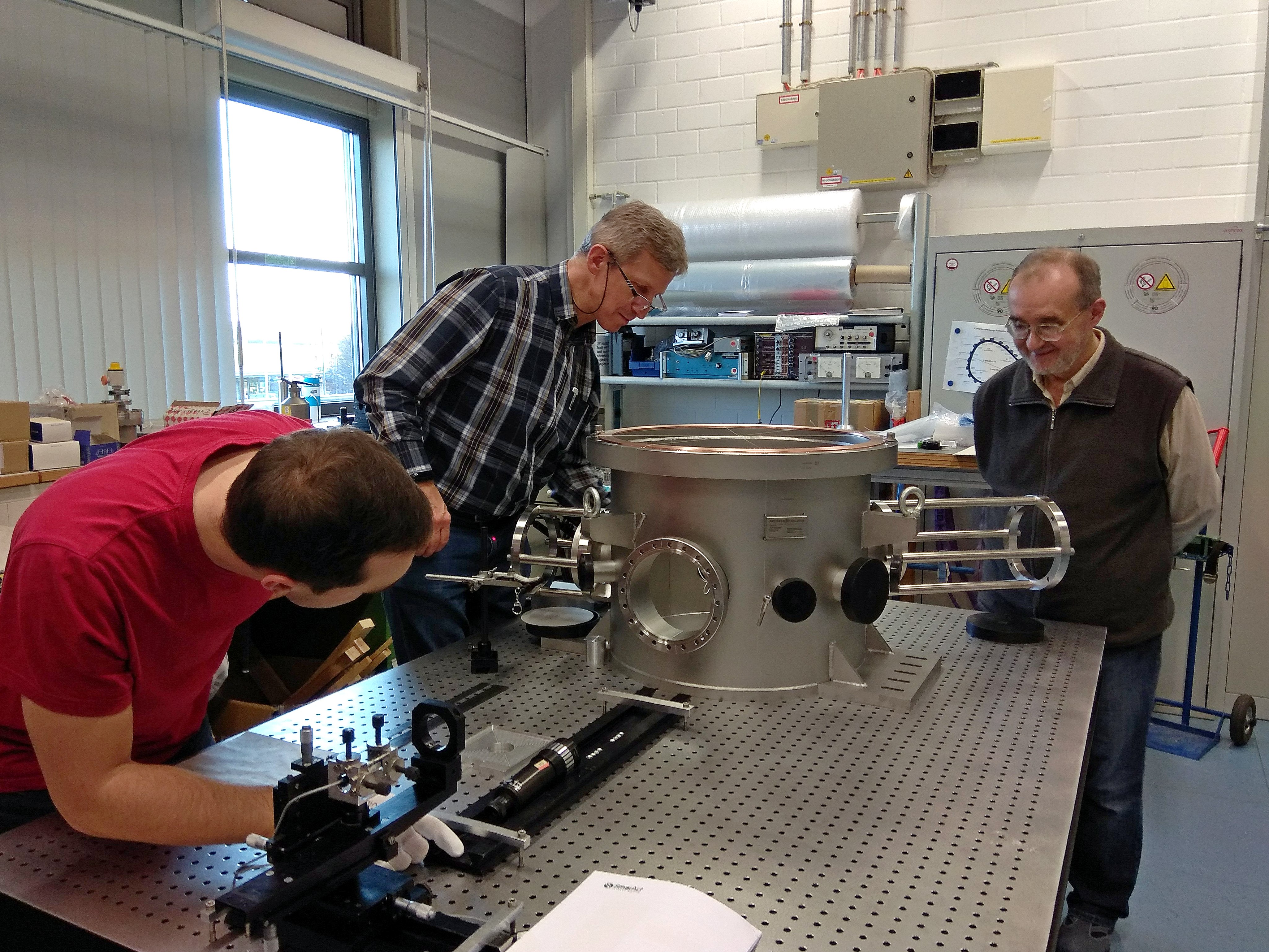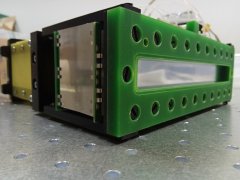The Laboratory carries out projects aimed at the construction and development of GEM (Gas Electron Multiplier) gas detectors for the needs of soft X-ray imaging of plasma structures and monitoring radiation from plasma admixtures (e.g. tungsten). The search and development of new technologies within plasma diagnostics is associated with the growing requirements for the radiation stability of the materials applied in connection with the development and use of thermonuclear facilities where research on the processes occurring during the interaction of radiation with matter has gained particular importance. This problem also refers to diagnostic components whose materials are exposed to the products of the fusion reaction. The current requirement is to develop the new X-ray imaging detection technology for tokamaks such as ITER.

Laboratory work on a GEM detector
The work performed in the Laboratory deals with the study of the effect of plasma on the surface of the chamber walls while contact with plasma, and the process of originating and behaviour of plasma impurities. The current problem is not only to maintain high-temperature plasma but also to prevent and control its contamination. The success in confining controlled thermonuclear fusion depends on solving these problems.
As far as experimental reactors, tokamaks are concerned, now and in the near future the choice of chamber wall material is limited to materials based on carbon, beryllium and tungsten. These materials have varied structures, which allows for their optimal selection, taking into account the characteristics of the reactor and the operating conditions of a specific component of the first wall. Tungsten, which is to be applied as divertor material in the ITER reactor, is of particular interest here.
Basic information on impurities is obtained by examining the linear emission of admixtures. The solution to most of the impurity problems depends to a large extent on the knowledge of the dynamics of the admixture emission in time and space (in the section of the plasma cord). This leads to the understanding of the impact of impurities on plasma confinement and discharge scenarios. This knowledge should allow for a better assessment of the state of plasma and optimization of the discharge parameters for the future fusion reactors.
The X-ray spectroscopy used for this purpose is a recognized, effective and powerful tool in plasma diagnostics. Measurement of such radiation (in the 0.1-20 keV region) is a standard way of obtaining valuable information on particle transport, magnetic configuration and MHD (MagnetoHydroDynamics) phenomena. The work performed in the Laboratory is aimed at the development of the technology of plasma imaging in the area of soft X-ray (SXR) intended for monitoring the radiation of plasma impurities for the future fusion devices and the implementation of GEM detectors for poloidal tomography to study plasma admixture, e.g. as part of the WEST project (Tungsten (W) Environment in Steady-state Tokamak, Cadarache, France). The tasks deal with the preparation of the concept and construction of gas detectors, installation of detectors, testing in the Laboratory and on existing devices (JET, ASDEX), preparation and development of algorithms for the reconstruction of the position and energy of recorded photons, simulation of phenomena occurring in the detector gas medium, and data analysis. This research is conducted in cooperation with research centres in Poland and abroad.
The Laboratory also conducts research on the development of diagnostic devices (PHA, C/O Monitor, MFS system) designed to study plasma impurities in the field of soft X-ray and ultraviolet radiation (soft X-ray/XUV) for the Wendelstein 7-X stellarator (Greifswald, Germany).
One of the systems developed for the W7-X stellarator focuses on the application of the amplitude analysis of pulses from cooled semiconductor detectors operating in the quantum counting regime (PHA). The aim of this diagnostics is to measure plasma impurities in the soft X-ray range (0.1 - 20 keV). The device started its operation on the W7-X stellarator in 2016 during the first experimental campaign.

PHA diagnostic device of the W7-X
Another device of our interest is the so-called "C/O Monitor" designed to measure the intensity changes of four lighter plasma impurities (boron, carbon, nitrogen, and oxygen). The spectrometer is currently in the production phase, and the planned launch is scheduled for the next OP 2.0 (Operational Phase 2.0) experimental campaign in 2022.

Laboratory work on the "C/O Monitor" diagnostic device for the W7-X
The Laboratory also focuses its research interests on plasma impurities on the LHD stellarator at NIFS (Tokio, Japan) (www.nifs.ac.jp/en). As part of this activity, researchers from the IPPLM actively participate in experimental campaigns to broaden their knowledge on the transport of plasma impurities, both hydrogen and deuterium. In these experiments, the focus is made on the study of internal impurities, as well as those introduced from the outside using TESPEL capsules (Tracer Encapsulated Solid Pellet). The purpose of the activities described here is the controlled injection of the specific amount of impurities into plasma, and then their exact comparison depending on the plasma conditions, e.g. its density, temperature, type of heating (ECRH, NBI) or the distance of deposition from the plasma axis. The work is performed under the EUROfusion project.










